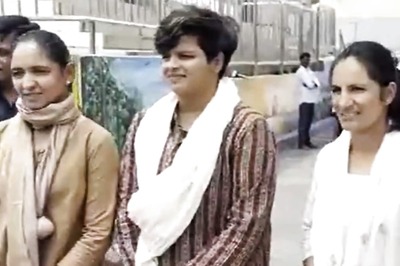
views
The fast-paced digital era has brought about a seismic shift in how we access and consume information. From educational institutions to the ever-evolving job market, there is a staggering adoption of technology not only in the consumption of information but also in operations, facilitating a smoother, more convenient way of life. Microlearning is one such tool, combining efficiency and education into small, bite-sized pieces of information using multimedia formats like videos (especially the trending one-minute-long reels), podcasts, quizzes, and mobile applications to make learning streamlined and accessible anytime, anywhere.
The term ‘microlearning’ dates back to the pre-internet era of the 1960s, first used in ‘The Economics of Human Resources’ by Héctor Correa in 1963. However, the concept may be nearly 150 years old, rooted in the work of German psychologist Hermann Ebbinghaus, who described its core principles. Today, microlearning transcends the walls of classrooms, simultaneously paving the way for efficiency and fostering robust, niche skills for employees across advanced domains.
With 47 per cent of top executives prioritising microlearning in the current fiscal year, as reported in the 2024 LinkedIn Learning Workplace Report, microlearning offers a substantial ground for employee training in key areas such as generative AI, software applications, fundamental cybersecurity practices, and digital collaboration platforms.
That being said, microlearning presents a significant opportunity for India to not only empower and enhance our youth to become adept, well-rounded individuals but also to enable our workforce to continue their learning journey across various domains, equipping them with the necessary knowledge for success in the modern world.
Why is Microlearning gaining momentum?
India’s digital landscape has transformed dramatically over the past decade. With over 820 million internet users and smartphone penetration expected to reach 96 per cent by 2040, the country is experiencing tremendous momentum in technology adoption and the revolution of digital learning. Microlearning is gaining traction due to its effectiveness in addressing the shortcomings of traditional education. Unlike lengthy lectures or hefty textbooks, it offers concise, digestible lessons that enhance retention.
Studies show that learners grasp information more effectively when presented in small portions, further bolstering long-term retention. Leveraging this approach, microlearning not only enhances engagement and memory by allowing learners to focus on specific concepts but also accommodates multitasking for individuals balancing their professional lives with the pursuit of knowledge in their time-constrained lives.
Additionally, the Covid pandemic significantly increased the utilisation of microlearning platforms, as the world went practically virtual in every sense. Government initiatives like Digital India have further accelerated the adoption of tools like microlearning to enhance skills, whether for academic purposes or to sharpen one’s command of a foreign language.
Finding the Balance between Traditional and Micro Learning
Microlearning may offer a revolutionary tool for enhancing knowledge; however, it does come with certain limitations. While it delivers focused content, microlearning may not be as effective for deeper, more complex subjects that require critical thinking or sustained engagement—potentially hindering the development of problem-solving and critical thinking skills. Additionally, bite-sized learning may encourage surface-level understanding and inadvertently cultivate shorter attention spans among individuals. Therefore, it is crucial to find the right balance between traditional educational methods and microlearning to provide a truly comprehensive understanding.
To fully harness the potential of microlearning, a collaborative effort from stakeholders across the spectrum is essential. Such collaborations are already underway, with corporations and tech conglomerates leveraging this tool to revolutionize learning for their respective beneficiaries.
Several educational technology companies (such as Byju’s and Unacademy) have transformed the Indian education landscape by integrating microlearning techniques into their digital platforms, offering concise, animated videos that simplify complex subjects, aiding students in their preparation for competitive exams. Government initiatives like the ePathshala app have also paved the way for much wider and democratised access to education by providing short, curriculum-based content for students in several regional languages.
Similarly, the corporate world’s adoption of microlearning has further accelerated learning among the young workforce, offering a cost-effective and efficient method to enhance their skills. Major information technology firms have implemented microlearning modules for employee training, enabling staff to swiftly adapt to emerging technologies and global market trends.
Microlearning represents a significant shift in how we approach education, especially in an age dominated by technology. It offers an efficient, flexible, and accessible way to acquire new skills, making it highly valuable for modern learners. While it may not entirely replace traditional methods, it certainly complements them, providing a practical solution to the evolving educational needs of the digital age—for both students and professionals. In a country as large and diverse as ours, where access to quality and equitable education is a persistent challenge, microlearning has the potential to bridge gaps and democratize learning on a massive scale.
Praneet Mungali, Educationist and Trustee of Sanskriti Group Schools. Views expressed in the above piece are personal and solely those of the author. They do not necessarily reflect News18’s views.



















Comments
0 comment